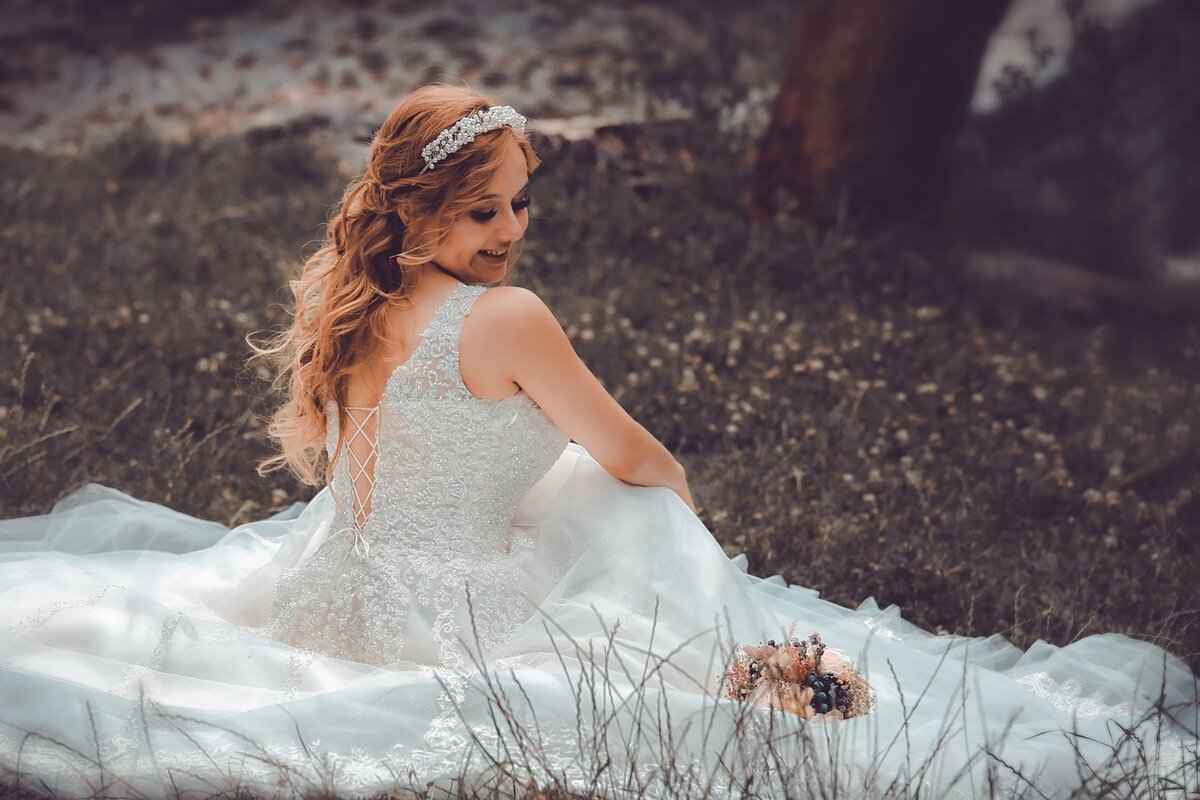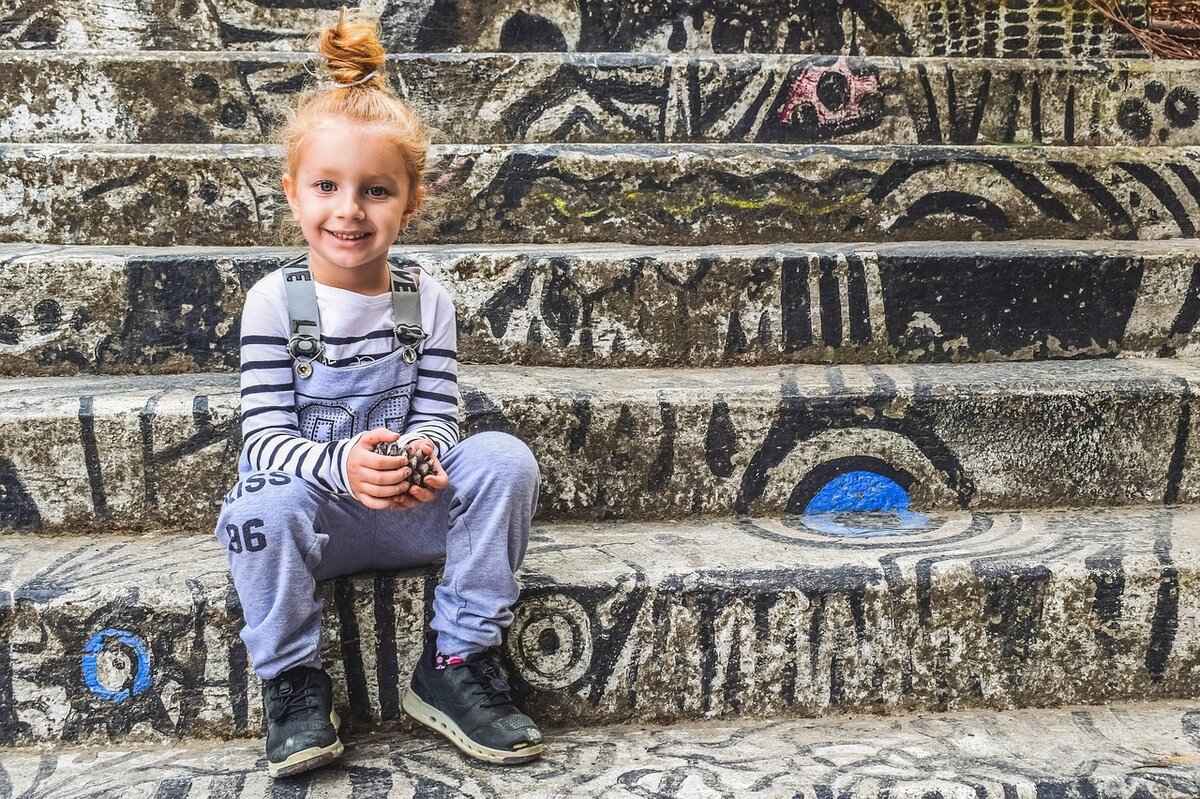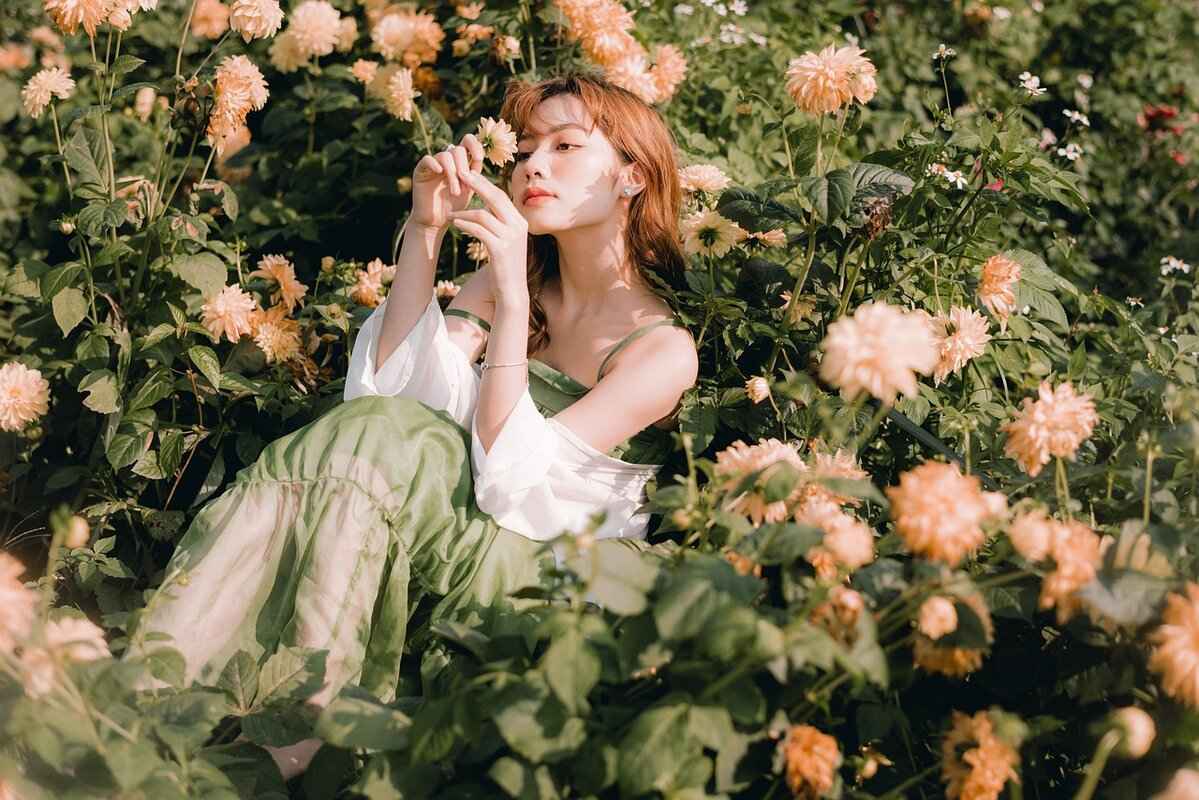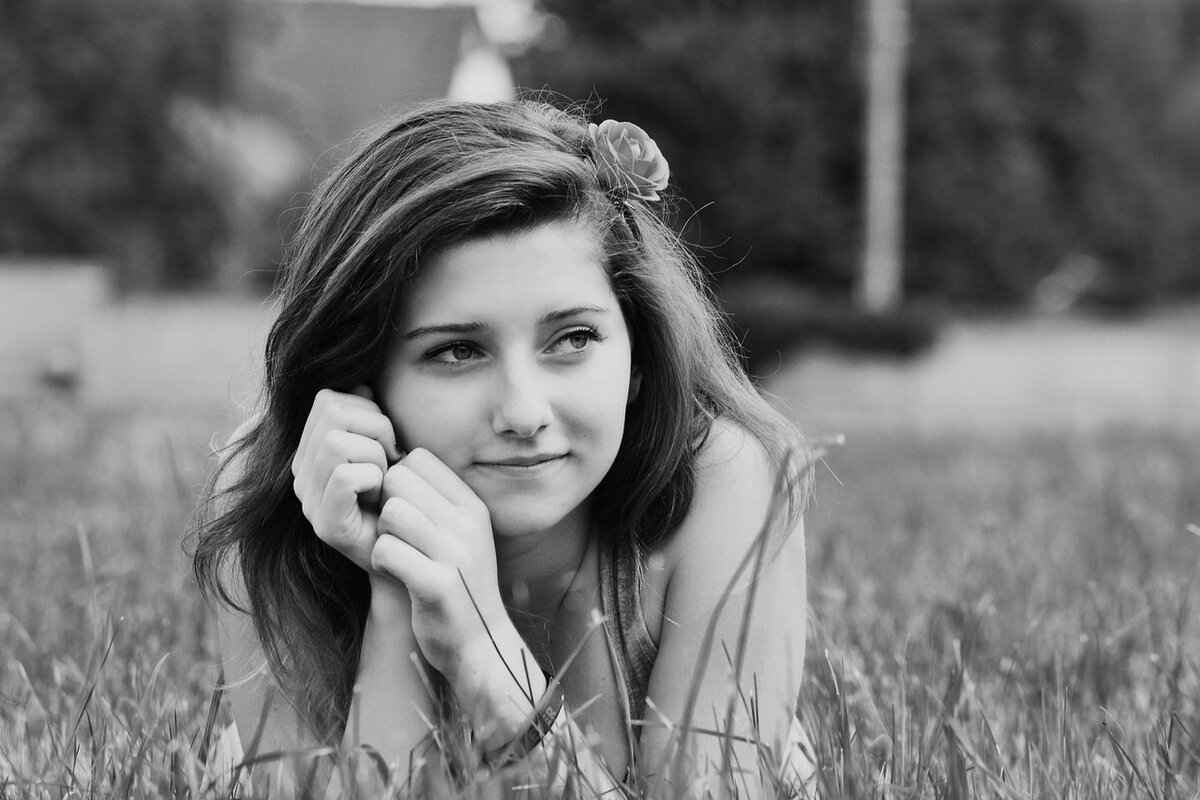This article delves into effective techniques for appearing slimmer in photographs through strategic posing and editing methods. Discover practical tips that can enhance your visual presentation in images, ensuring you look your best every time you click the shutter.
Understanding the Importance of Angles
The angle from which a photo is taken can significantly impact your appearance. Learning to identify the most flattering angles is crucial for creating a slimmer silhouette. For instance, holding the camera slightly above eye level can elongate your figure and make you appear taller. Experimenting with different angles can help you find the most flattering perspective that highlights your best features.
Finding Your Best Side
Everyone has a side that they feel looks better in photos. To discover your most flattering profile, try taking photos from various angles. Often, turning your head slightly to one side can create a more defined jawline and enhance your overall appearance. Practice in front of a mirror to see which side you prefer, and remember to showcase that side in your photos.
Mastering the Art of Posing
Posing correctly is essential for achieving a thinner look in photos. Understanding how to position your body can enhance your appearance and create a more flattering image. For example, creating space between your limbs can avoid a flat silhouette, while the popular S-curve pose can add elegance and a slimming effect.
Creating Space Between Your Limbs
To avoid a flat silhouette, position your arms and legs apart when posing. This technique creates negative space, which helps to define your shape and enhance your overall look. Instead of pressing your arms against your body, try extending them slightly or placing one hand on your hip to create a more dynamic pose.
Choosing the Right Clothing
The clothing you wear can greatly influence how you appear in photos. Selecting the right fabrics, colors, and styles can help create a slimmer look. Darker colors are known for their slimming effects, while lightweight, flowing fabrics can help conceal areas you may want to downplay.
Opting for Darker Colors
Darker colors, such as black, navy, or deep jewel tones, can create a visually elongating effect, making you appear thinner in photos. These shades absorb light rather than reflect it, which can help streamline your figure. When choosing outfits, consider monochromatic looks, as they can enhance the illusion of height and slenderness.
Utilizing Editing Tools Effectively
Post-processing can significantly enhance your photos. Knowing how to use editing tools can help you achieve a slimmer look without compromising the authenticity of your image. Simple adjustments like cropping and brightness can make a substantial difference in how you are perceived in photos.
Using Cropping Techniques
Cropping can help focus on your best features while eliminating unwanted areas. For instance, cropping out distracting elements in the background can draw attention to you and create a cleaner image. Additionally, consider cropping to a more vertical format to elongate your appearance further.
Lighting: The Key to Flattering Photos
Proper lighting is essential for achieving the best results in photography. Understanding how to use natural and artificial light can enhance your features and create a slimmer appearance. Positioning yourself in soft, natural light can help reduce harsh shadows and create a more flattering look.
Utilizing Natural Light
Natural light, especially during the golden hour, can create soft shadows that enhance your figure. Positioning yourself to take advantage of this light can lead to stunning results. Avoid direct sunlight, which can create unflattering shadows, and instead, opt for diffused light.
Facial Expressions Matter
Your facial expression can significantly impact how you are perceived in photos. Adopting the right expression can enhance your overall look and contribute to a slimmer appearance. A relaxed smile can make you look more approachable and attractive.
Practicing Relaxed Smiles
A tense smile can make you look less natural. Practicing relaxed smiles can create a more inviting and flattering image. Try thinking of something that makes you genuinely happy to evoke a natural smile.
Incorporating Props and Backgrounds
The use of props and backgrounds can enhance your photos significantly. Choosing the right elements can help create a more dynamic and visually appealing image. A clutter-free background allows you to stand out, while props can create interesting compositions.
Selecting the Right Background
A cluttered background can detract from your appearance. Choosing a simple, clean background can help you stand out and create a more polished look. Consider using solid colors or natural settings to enhance your overall aesthetic.
Practicing Confidence and Posture
Confidence plays a crucial role in how you appear in photos. Maintaining good posture and exuding self-assurance can significantly enhance your overall look. Standing tall with shoulders back can project confidence and improve your appearance in photos.
Embracing Your Unique Features
Accepting and embracing your unique features can enhance your confidence. When you feel good about yourself, it shows in your photos, contributing to a more authentic and appealing image. Remember, confidence is key to looking your best in every snapshot.

Understanding the Importance of Angles
The angle at which a photograph is taken plays a crucial role in how you are perceived in the image. When capturing a moment, the perspective can alter your silhouette and overall appearance dramatically. By understanding the significance of angles, you can learn to present yourself in the most flattering light possible.
- Flattering Angles Create Confidence: Knowing your best angles can make a significant difference in how you feel about yourself in photos. When you feel confident in your appearance, it reflects in your posture and facial expressions, resulting in a more engaging image.
- Impact of High and Low Angles: A camera positioned slightly above eye level can elongate your neck and create a slimmer appearance. Conversely, a low angle can emphasize certain features, which may not always be flattering.
- Experimentation is Key: Everyone has unique features that can be highlighted or softened by the angle of the shot. Spend time experimenting with different angles to discover what works best for you. You might find that turning your head slightly or tilting your body can create a more appealing profile.
Identifying Your Best Angles
To master the art of angles, begin by taking a series of test photos from various perspectives. This practice can help you identify the angles that enhance your features and create a slimmer appearance. Consider the following tips:
- Turn Your Body: Instead of facing the camera straight on, try turning your body slightly to the side. This position can create a more dynamic silhouette and reduce the appearance of width.
- Chin Forward: Pushing your chin slightly forward can help define your jawline and prevent double chins, resulting in a more polished look.
- Shoulders Back: Maintaining good posture by keeping your shoulders back can instantly improve your appearance in photos. This position not only enhances your silhouette but also exudes confidence.
Utilizing Mirrors for Practice
Using a mirror can be an excellent way to practice your angles. Stand in front of a full-length mirror and experiment with different poses and angles. Observe how slight adjustments in your posture or head tilt can change the overall effect. This practice will help you become more aware of your body and how it moves, leading to more natural poses in front of the camera.
Conclusion
Understanding the importance of angles is key to looking your best in photographs. By experimenting with different perspectives and practicing poses that highlight your features, you can significantly enhance your appearance. Remember, the goal is not just to look thinner but to feel confident and authentic in your images.
Finding Your Best Side
When it comes to photography, everyone has a side that they feel looks better in photos. This perception is often rooted in our personal experiences and preferences. However, experimenting with different angles is essential in discovering your most flattering profile. The right angle can dramatically enhance your appearance, contributing to a slimmer look and a more confident presentation.
To begin your journey in finding your best side, consider the following tips:
- Take Multiple Shots: Don’t hesitate to take several photos from different angles. This will allow you to compare and identify which side you prefer. Use a mirror to practice your poses before capturing them on camera.
- Observe Your Features: Pay attention to your facial features and how they are highlighted from various angles. Some people find that their cheekbones appear more defined from one side, while others may prefer the way their smile looks from a different angle.
- Utilize Your Body’s Natural Curves: Your body has natural curves that can be accentuated through the right angles. Leaning slightly forward or tilting your head can create a more dynamic and flattering image.
Another important factor is the camera height. Shooting from slightly above can elongate your figure and help you appear taller and thinner. This technique can also enhance your facial features, making your eyes the focal point of the image.
Additionally, lighting plays a critical role in how your best side is perceived. Natural light, especially during the golden hour, can create soft shadows that enhance your features. Positioning yourself to take advantage of this light can lead to stunning results.
Moreover, don’t forget the importance of confidence. When you feel good about yourself, it shows in your photos. Embrace your unique features and practice good posture. Standing tall with your shoulders back can create a more flattering silhouette.
In conclusion, finding your best side involves a combination of experimentation, observation, and confidence. By taking the time to explore different angles and lighting conditions, you can discover the most flattering aspects of your appearance and enhance your overall look in photographs.
Experimenting with Camera Height
is a crucial aspect of photography that can dramatically influence how your body is perceived in images. The height at which a camera is positioned can create various visual effects, altering the viewer’s perspective and impacting the overall composition of the photo. Understanding these effects can help you present yourself in the best possible light.
When the camera is placed slightly above eye level, it can create an elongating effect on your figure. This positioning tends to draw the viewer’s gaze downward, which can make your body appear taller and slimmer. This technique is particularly effective for full-body shots, as it helps to create a more flattering silhouette. Additionally, shooting from a higher angle can minimize the appearance of any areas you may wish to downplay, such as the waist or thighs.
Conversely, shooting from below eye level can have the opposite effect. It may add bulk to your frame and highlight areas that you might prefer to conceal. This angle can create a more dramatic look but often at the expense of a slimmer appearance. Therefore, it is essential to experiment with different heights to find what works best for you.
To maximize the benefits of camera height, consider the following tips:
- Test Various Angles: Take multiple shots from different heights to see which angle flatters your body shape the most. A simple adjustment of a few inches can make a significant difference.
- Use a Tripod: A tripod allows you to stabilize your camera at varying heights, enabling you to experiment without the challenges of holding the camera steady.
- Incorporate Movement: If possible, try moving slightly up or down while taking the photo. This can help you find the most flattering angle in real-time.
Moreover, understanding the relationship between camera height and your body shape can enhance your overall photographic experience. For instance, if you’re aiming for a more dynamic shot, a slightly lower angle can add depth and drama, making the image more engaging. However, for classic portraits, a higher angle often yields more pleasing results.
In addition to camera height, consider the background and lighting in your photos. A well-lit environment can complement the effects of camera height, enhancing your features and creating a more visually appealing image. Experimenting with different backgrounds can also help you find the perfect setting that works harmoniously with your chosen angle.
Ultimately, the key to looking your best in photos lies in confidence and experimentation. By understanding how camera height impacts your appearance and practicing different techniques, you can significantly improve your photographic outcomes. Whether you’re preparing for a professional shoot or simply capturing memories with friends, mastering the art of camera height can help you achieve the look you desire.

Mastering the Art of Posing
is essential for anyone looking to enhance their appearance in photographs. The way you position your body can dramatically influence how you look, helping to create a more flattering image. By understanding and applying effective posing techniques, you can achieve a slimmer and more confident look in your photos.
Posing is not just about standing still; it’s about creating an image that highlights your best features while minimizing areas you may be less confident about. The right pose can draw attention to your face, elongate your body, and create a visually appealing silhouette. When done correctly, posing can transform an ordinary photo into a stunning portrait.
One of the most effective techniques for looking thinner in photos is to create space between your limbs. Avoiding a flat silhouette is crucial; instead, position your arms and legs apart to create negative space. This technique helps define your shape, making you appear slimmer and more elegant. For example, if your arms are pressed against your body, it can create a bulkier look. Instead, try to angle your arms slightly away from your torso, which can enhance your overall appearance.
The S Curve Pose is a classic technique used by models and photographers alike. This pose involves creating gentle curves in your body, which can enhance your figure and add elegance to your image. To achieve this look, shift your weight onto one leg while bending the other knee slightly. This will create an S-shaped curve that can make your body appear more streamlined. Additionally, positioning your shoulders at a slight angle can further enhance this effect, giving your photo a dynamic and flattering look.
Your surroundings can also play a significant role in how you pose. Incorporating elements from your environment can create interesting compositions and draw attention away from less flattering areas. For example, leaning against a wall or sitting on a step can provide support and help create a more relaxed pose. Additionally, using props strategically can enhance your photo’s aesthetic and make the image more engaging.
Your facial expression is just as important as your body position. A relaxed smile can make you appear more approachable and inviting, while a tense or forced expression can detract from your overall look. Practice different smiles in front of a mirror to find what feels most natural to you. Engaging your eyes is another crucial aspect; confident eye contact can draw attention to your face and create a more balanced image.
Finally, the key to mastering the art of posing is practice. Spend time in front of the mirror experimenting with different poses, angles, and expressions. Take note of what works best for you and try to replicate those elements during your photo sessions. Remember, confidence is the most attractive quality, so embrace your unique features and let your personality shine through in your photos.
Creating Space Between Your Limbs
When it comes to looking slimmer in photographs, one of the most effective techniques is to create space between your limbs. This simple yet powerful strategy can significantly enhance your overall appearance by avoiding a flat silhouette. Here’s how you can master this technique to achieve a more defined and flattering look in your images.
- Positioning Your Arms: Instead of letting your arms hang straight down by your sides, try positioning them slightly away from your body. This creates negative space that draws attention to your waistline and enhances your silhouette. You can achieve this by placing your hands on your hips or gently bending your elbows.
- Leg Placement: Positioning your legs apart can also contribute to a slimmer appearance. Stand with one leg slightly in front of the other, or keep your feet shoulder-width apart. This not only creates a more dynamic pose but also adds depth to the photograph, making you look taller and leaner.
- Utilizing Angles: The angle at which you stand can affect how your limbs are perceived. Try turning your body slightly to the side rather than facing the camera straight on. This angle not only slims your overall look but also allows for a more flattering view of your limbs.
Creating space between your limbs is not just about physical positioning; it’s also about the energy you project. When you pose confidently, with your limbs separated, you convey a sense of ease and poise. This can make a significant difference in how you are perceived in photos.
Moreover, incorporating movement into your poses can enhance the effect of negative space. For instance, gently swaying your arms or shifting your weight from one leg to the other can create a natural flow that further emphasizes your shape. Remember, the goal is to look relaxed and comfortable, which will ultimately lead to better photographs.
In addition to these techniques, consider the clothing you wear. Outfits that allow for movement and have a structured fit can complement the space you create with your limbs. Fabrics that drape well can enhance your silhouette, while overly tight clothing may counteract the benefits of your posing strategy.
In summary, creating space between your limbs is a crucial technique for achieving a slimmer appearance in photographs. By positioning your arms and legs thoughtfully, utilizing angles, and incorporating movement, you can enhance your visual presentation significantly. This simple adjustment can transform your photos, allowing you to feel confident and look your best.
Utilizing the
How to Look Thinner in Photos: Posing and Editing Tips
This article explores effective techniques for appearing slimmer in photographs through strategic posing and editing methods. Discover practical tips that can enhance your visual presentation in images.
Understanding the Importance of Angles
The angle from which a photo is taken can significantly impact how you appear. Learning to identify the most flattering angles can help create a slimmer silhouette in your images.
Finding Your Best Side
Everyone has a side that they feel looks better in photos. Experimenting with different angles can help you discover your most flattering profile, contributing to a slimmer appearance.
Experimenting with Camera Height
The height of the camera can alter the perception of your body shape. Shooting from slightly above can elongate your figure, making you appear taller and thinner in photos.
Mastering the Art of Posing
Posing correctly is crucial for achieving a thinner look in photos. Understanding how to position your body can enhance your appearance and create a more flattering image.
Creating Space Between Your Limbs
Avoiding a flat silhouette is vital for looking thinner. Positioning your arms and legs apart can create negative space, which helps to define your shape and enhance your overall look.
Utilizing the S Curve Pose
The S curve pose involves creating curves in your body to enhance your figure. This pose can add elegance and a slimming effect, making it a popular choice for many photographers.
Choosing the Right Clothing
The clothing you wear can greatly influence how you appear in photos. Selecting the right fabrics, colors, and styles can help create a slimmer look.
Opting for Darker Colors
Darker colors are known for their slimming effects. Wearing shades like black, navy, or deep jewel tones can create a visually elongating effect, making you appear thinner in photos.
Understanding Fabric Choices
The type of fabric can also affect your appearance. Lightweight, flowing fabrics can help conceal areas you may want to downplay, while stiff materials can add bulk.
Utilizing Editing Tools Effectively
Post-processing can enhance your photos significantly. Knowing how to use editing tools can help you achieve a slimmer look without compromising the authenticity of your image.
Using Cropping Techniques
Cropping can help focus on your best features while eliminating unwanted areas. This technique can make a significant difference in how you are perceived in photos.
Adjusting Brightness and Contrast
Adjusting brightness and contrast can enhance your image’s overall appearance. A well-edited photo can create a more defined silhouette, contributing to a slimmer look.
Lighting: The Key to Flattering Photos
Proper lighting is essential for achieving the best results in photography. Understanding how to use natural and artificial light can enhance your features and create a slimmer appearance.
Utilizing Natural Light
Natural light, especially during golden hour, can create soft shadows that enhance your figure. Positioning yourself to take advantage of this light can lead to stunning results.
Experimenting with Shadows
Shadows can be used creatively to highlight your best features. Understanding how to manipulate shadows can add depth to your photos and create a more flattering look.
Facial Expressions Matter
Your facial expression can significantly impact how you are perceived in photos. Adopting the right expression can enhance your overall look and contribute to a slimmer appearance.
Practicing Relaxed Smiles
A tense smile can make you look less natural. Practicing relaxed smiles can create a more inviting and flattering image, enhancing your overall appeal in photographs.
Engaging Your Eyes
The eyes are often the focal point of a photo. Engaging your eyes with confidence can draw attention to your face, creating a more balanced and flattering image.
Incorporating Props and Backgrounds
The use of props and backgrounds can enhance your photos significantly. Choosing the right elements can help create a more dynamic and visually appealing image.
Selecting the Right Background
A cluttered background can detract from your appearance. Choosing a simple, clean background can help you stand out and create a more polished look.
Using Props to Your Advantage
Props can help create interesting compositions and draw attention away from areas you may want to downplay. Thoughtfully incorporating props can enhance your overall photo aesthetic.
Practicing Confidence and Posture
Confidence plays a crucial role in how you appear in photos. Maintaining good posture and exuding self-assurance can significantly enhance your overall look.
Standing Tall and Engaging
Good posture can elongate your figure and create a more flattering silhouette. Standing tall with shoulders back can project confidence and improve your appearance in photos.
Embracing Your Unique Features
Accepting and embracing your unique features can enhance your confidence. When you feel good about yourself, it shows in your photos, contributing to a more authentic and appealing image.
S
How to Look Thinner in Photos: Posing and Editing TipsThis article explores effective techniques for appearing slimmer in photographs through strategic posing and editing methods. Discover practical tips that can enhance your visual presentation in images.
Understanding the Importance of Angles
The angle from which a photo is taken can significantly impact how you appear. Learning to identify the most flattering angles can help create a slimmer silhouette in your images.
- Finding Your Best Side: Everyone has a side that they feel looks better in photos. Experimenting with different angles can help you discover your most flattering profile, contributing to a slimmer appearance.
- Experimenting with Camera Height: The height of the camera can alter the perception of your body shape. Shooting from slightly above can elongate your figure, making you appear taller and thinner in photos.
Mastering the Art of Posing
Posing correctly is crucial for achieving a thinner look in photos. Understanding how to position your body can enhance your appearance and create a more flattering image.
- Creating Space Between Your Limbs: Avoiding a flat silhouette is vital for looking thinner. Positioning your arms and legs apart can create negative space, which helps to define your shape and enhance your overall look.
- Utilizing the S Curve Pose: The S curve pose involves creating curves in your body to enhance your figure. This pose can add elegance and a slimming effect, making it a popular choice for many photographers.
Choosing the Right Clothing
The clothing you wear can greatly influence how you appear in photos. Selecting the right fabrics, colors, and styles can help create a slimmer look.
- Opting for Darker Colors: Darker colors are known for their slimming effects. Wearing shades like black, navy, or deep jewel tones can create a visually elongating effect, making you appear thinner in photos.
- Understanding Fabric Choices: The type of fabric can also affect your appearance. Lightweight, flowing fabrics can help conceal areas you may want to downplay, while stiff materials can add bulk.
Utilizing Editing Tools Effectively
Post-processing can enhance your photos significantly. Knowing how to use editing tools can help you achieve a slimmer look without compromising the authenticity of your image.
- Using Cropping Techniques: Cropping can help focus on your best features while eliminating unwanted areas. This technique can make a significant difference in how you are perceived in photos.
- Adjusting Brightness and Contrast: Adjusting brightness and contrast can enhance your image’s overall appearance. A well-edited photo can create a more defined silhouette, contributing to a slimmer look.
Lighting: The Key to Flattering Photos
Proper lighting is essential for achieving the best results in photography. Understanding how to use natural and artificial light can enhance your features and create a slimmer appearance.
- Utilizing Natural Light: Natural light, especially during golden hour, can create soft shadows that enhance your figure. Positioning yourself to take advantage of this light can lead to stunning results.
- Experimenting with Shadows: Shadows can be used creatively to highlight your best features. Understanding how to manipulate shadows can add depth to your photos and create a more flattering look.
Facial Expressions Matter
Your facial expression can significantly impact how you are perceived in photos. Adopting the right expression can enhance your overall look and contribute to a slimmer appearance.
- Practicing Relaxed Smiles: A tense smile can make you look less natural. Practicing relaxed smiles can create a more inviting and flattering image, enhancing your overall appeal in photographs.
- Engaging Your Eyes: The eyes are often the focal point of a photo. Engaging your eyes with confidence can draw attention to your face, creating a more balanced and flattering image.
Incorporating Props and Backgrounds
The use of props and backgrounds can enhance your photos significantly. Choosing the right elements can help create a more dynamic and visually appealing image.
- Selecting the Right Background: A cluttered background can detract from your appearance. Choosing a simple, clean background can help you stand out and create a more polished look.
- Using Props to Your Advantage: Props can help create interesting compositions and draw attention away from areas you may want to downplay. Thoughtfully incorporating props can enhance your overall photo aesthetic.
Practicing Confidence and Posture
Confidence plays a crucial role in how you appear in photos. Maintaining good posture and exuding self-assurance can significantly enhance your overall look.
- Standing Tall and Engaging: Good posture can elongate your figure and create a more flattering silhouette. Standing tall with shoulders back can project confidence and improve your appearance in photos.
- Embracing Your Unique Features: Accepting and embracing your unique features can enhance your confidence. When you feel good about yourself, it shows in your photos, contributing to a more authentic and appealing image.
Curve Pose
Understanding the Curve Pose for Flattering Photos
The curve pose is a popular technique used in photography to create a visually appealing and flattering image. This pose emphasizes the natural curves of the body, helping to enhance the figure and create an elegant silhouette. By mastering the curve pose, individuals can significantly improve their appearance in photographs, making it a valuable skill for anyone looking to look their best.
What is the Curve Pose?
The curve pose involves positioning the body in a way that highlights its natural curves, creating an “S” shape. This shape is achieved by shifting weight onto one leg, which allows the hips to pop out slightly, while simultaneously elongating the torso. The arms can be positioned to create space, further enhancing the overall look. This pose is not only flattering but also adds a touch of grace and sophistication to any photograph.
Why is the Curve Pose Effective?
The effectiveness of the curve pose lies in its ability to create a dynamic and engaging image. By incorporating curves, the pose breaks up the straight lines of the body, which can often appear less interesting in photographs. Curves draw the viewer’s eye and create a sense of movement, making the image more captivating. Additionally, the curve pose can help to define the waist, giving the illusion of a slimmer figure.
Tips for Mastering the Curve Pose
- Practice Weight Shifting: To achieve the curve pose, practice shifting your weight onto one leg. This will help create the desired curve in your body.
- Engage Your Core: Keeping your core engaged will help you maintain good posture and enhance the overall look of the pose.
- Experiment with Arm Placement: Position your arms in a way that creates negative space. Avoid pressing them against your body to prevent a flat silhouette.
- Use Your Head and Neck: Tilting your head slightly or elongating your neck can add elegance to the pose and draw attention to your face.
- Find Your Best Angle: Experiment with different angles to see which one showcases your curves best. A slight turn of the body can make a significant difference.
Incorporating the Curve Pose in Different Settings
The curve pose can be adapted for various settings, whether it’s a casual outdoor shoot or a formal studio session. In outdoor settings, consider using natural elements like trees or benches to enhance the pose. Leaning against a tree or sitting on a bench can provide additional support while allowing you to maintain the curve. In studio settings, playing with backgrounds and lighting can further enhance the effect of the pose.
Common Mistakes to Avoid
When attempting the curve pose, there are several common mistakes to avoid to ensure the best results. One mistake is over-arching the back, which can create an unnatural look. Instead, focus on a gentle curve that feels comfortable. Additionally, avoid locking your knees, as this can lead to stiffness in the pose. Instead, keep your legs slightly bent to maintain a natural appearance.
Conclusion
Mastering the curve pose can significantly enhance your photographic presence, allowing you to showcase your best features elegantly. By practicing the tips outlined above and avoiding common mistakes, you can develop a strong understanding of this technique. With time and practice, the curve pose will become a natural part of your photographic repertoire, leading to more flattering and captivating images.
S
How to Look Thinner in Photos: Posing and Editing Tips
This article explores effective techniques for appearing slimmer in photographs through strategic posing and editing methods. Discover practical tips that can enhance your visual presentation in images.
Understanding the Importance of Angles
The angle from which a photo is taken can significantly impact how you appear. Learning to identify the most flattering angles can help create a slimmer silhouette in your images. For instance, a slight tilt of the camera can help avoid unflattering perspectives.
Finding Your Best Side
Everyone has a side that they feel looks better in photos. Experimenting with different angles can help you discover your most flattering profile, contributing to a slimmer appearance. Try turning your body slightly and positioning your chin forward to enhance your jawline.
Experimenting with Camera Height
The height of the camera can alter the perception of your body shape. Shooting from slightly above can elongate your figure, making you appear taller and thinner in photos. This technique can also help avoid double chins and create a more flattering overall look.
Mastering the Art of Posing
Posing correctly is crucial for achieving a thinner look in photos. Understanding how to position your body can enhance your appearance and create a more flattering image. The right pose can make a significant difference in how you are perceived.
Creating Space Between Your Limbs
Avoiding a flat silhouette is vital for looking thinner. Positioning your arms and legs apart can create negative space, which helps to define your shape and enhance your overall look. This technique can add depth and interest to your photos.
Utilizing the S Curve Pose
The S curve pose involves creating curves in your body to enhance your figure. This pose can add elegance and a slimming effect, making it a popular choice for many photographers. By bending your waist slightly and shifting your weight to one leg, you can achieve a more flattering silhouette.
Choosing the Right Clothing
The clothing you wear can greatly influence how you appear in photos. Selecting the right fabrics, colors, and styles can help create a slimmer look. It’s important to consider how different outfits can affect your overall appearance.
Opting for Darker Colors
Darker colors are known for their slimming effects. Wearing shades like black, navy, or deep jewel tones can create a visually elongating effect, making you appear thinner in photos. These colors can also help minimize the appearance of any areas you may want to downplay.
Understanding Fabric Choices
The type of fabric can also affect your appearance. Lightweight, flowing fabrics can help conceal areas you may want to downplay, while stiff materials can add bulk. Choosing the right fabric can enhance your overall look and contribute to a more flattering image.
Utilizing Editing Tools Effectively
Post-processing can enhance your photos significantly. Knowing how to use editing tools can help you achieve a slimmer look without compromising the authenticity of your image. Understanding basic editing techniques can make your photos stand out.
Using Cropping Techniques
Cropping can help focus on your best features while eliminating unwanted areas. This technique can make a significant difference in how you are perceived in photos. A well-cropped image can highlight your strengths and create a more polished look.
Adjusting Brightness and Contrast
Adjusting brightness and contrast can enhance your image’s overall appearance. A well-edited photo can create a more defined silhouette, contributing to a slimmer look. Proper adjustments can also enhance colors and details, making your image more visually appealing.
Lighting: The Key to Flattering Photos
Proper lighting is essential for achieving the best results in photography. Understanding how to use natural and artificial light can enhance your features and create a slimmer appearance. The right lighting can dramatically change the mood and feel of your images.
Utilizing Natural Light
Natural light, especially during golden hour, can create soft shadows that enhance your figure. Positioning yourself to take advantage of this light can lead to stunning results. Natural light can also add warmth and depth to your photos.
Experimenting with Shadows
Shadows can be used creatively to highlight your best features. Understanding how to manipulate shadows can add depth to your photos and create a more flattering look. Utilizing shadows effectively can enhance the overall composition of your images.
Facial Expressions Matter
Your facial expression can significantly impact how you are perceived in photos. Adopting the right expression can enhance your overall look and contribute to a slimmer appearance. A genuine smile can make a world of difference in how your image is received.
Practicing Relaxed Smiles
A tense smile can make you look less natural. Practicing relaxed smiles can create a more inviting and flattering image, enhancing your overall appeal in photographs. A relaxed expression can convey confidence and approachability.
Engaging Your Eyes
The eyes are often the focal point of a photo. Engaging your eyes with confidence can draw attention to your face, creating a more balanced and flattering image. A strong gaze can add depth and character to your photographs.
Incorporating Props and Backgrounds
The use of props and backgrounds can enhance your photos significantly. Choosing the right elements can help create a more dynamic and visually appealing image. Thoughtful composition can elevate the overall quality of your photos.
Selecting the Right Background
A cluttered background can detract from your appearance. Choosing a simple, clean background can help you stand out and create a more polished look. A well-chosen background can complement your outfit and enhance the overall aesthetic.
Using Props to Your Advantage
Props can help create interesting compositions and draw attention away from areas you may want to downplay. Thoughtfully incorporating props can enhance your overall photo aesthetic and add a unique touch to your images.
Practicing Confidence and Posture
Confidence plays a crucial role in how you appear in photos. Maintaining good posture and exuding self-assurance can significantly enhance your overall look. A confident demeanor can transform your photographs.
Standing Tall and Engaging
Good posture can elongate your figure and create a more flattering silhouette. Standing tall with shoulders back can project confidence and improve your appearance in photos. Proper posture can also enhance your overall presence in images.
Embracing Your Unique Features
Accepting and embracing your unique features can enhance your confidence. When you feel good about yourself, it shows in your photos, contributing to a more authentic and appealing image. Confidence in your individuality can resonate strongly in your photography.
curve pose involves creating curves in your body to enhance your figure. This pose can add elegance and a slimming effect, making it a popular choice for many photographers.
How to Enhance Your Figure with the S Curve Pose in PhotographyWhen it comes to photography, the way you pose can dramatically affect how you look in the final image. One of the most effective poses for enhancing your figure is the S Curve Pose. This pose not only adds elegance but also provides a slimming effect, making it a favorite among photographers and models alike. In this article, we will explore the nuances of the S Curve Pose, how to execute it effectively, and why it is a game changer in achieving stunning photographs.
Understanding the S Curve Pose
The S Curve Pose involves positioning your body in a way that creates a natural curve, resembling the letter “S”. This technique highlights your body’s natural shape and creates a more dynamic and engaging image. By shifting your weight onto one leg and allowing the other leg to bend slightly, you can create a beautiful curve that enhances your silhouette. This pose is not only flattering but also adds a sense of movement and grace to your photographs.
How to Achieve the Perfect S Curve Pose
- Find Your Balance: Start by standing with your feet shoulder-width apart. Shift your weight onto one leg, which will help create the initial curve.
- Engage Your Core: Keeping your core engaged will help maintain good posture and enhance the curve of your body.
- Position Your Arms: Your arms can play a crucial role in the S Curve Pose. Position them in a way that complements the curve, such as placing one hand on your hip and letting the other arm fall naturally.
- Angle Your Shoulders: Tilt your shoulders slightly towards the camera to enhance the curve and create a more flattering angle.
Why the S Curve Pose Works
The S Curve Pose is effective for several reasons. First, it creates a visually appealing line that draws the viewer’s eye along the curve of your body. This not only enhances your figure but also adds a sense of depth and dimension to the photograph. Additionally, this pose helps to create negative space, which can make you appear slimmer and more defined. By avoiding a flat silhouette, you allow your natural curves to shine through, resulting in a more flattering image.
Tips for Practicing the S Curve Pose
- Practice in Front of a Mirror: Before your photoshoot, practice the S Curve Pose in front of a mirror. This will help you become more comfortable with the pose and allow you to see what angles work best for you.
- Experiment with Different Angles: Not every angle will work for everyone. Take the time to experiment with various angles to find the most flattering position for your body type.
- Work with Your Photographer: Communicate with your photographer about the S Curve Pose. They can provide guidance and feedback to help you achieve the best results.
Incorporating the S Curve Pose into Your Photography
When incorporating the S Curve Pose into your photography, consider the overall composition of the shot. The background, lighting, and other elements can all influence the effectiveness of the pose. A clean and simple background can help emphasize the curve of your body, while natural lighting can enhance the overall look of the photograph. Additionally, consider using props or accessories that complement the pose and add interest to the image.
In conclusion, the S Curve Pose is a powerful tool for enhancing your figure in photographs. By mastering this pose and understanding its nuances, you can create stunning images that highlight your natural beauty. Whether you’re a professional model or simply someone looking to improve your personal photography, the S Curve Pose is a technique worth mastering.
Choosing the Right Clothing
The clothing you wear can dramatically influence how you appear in photos. The right choice of fabrics, colors, and styles can help create a slimmer look, enhancing your overall image. In this section, we will explore various aspects of clothing selection that can significantly impact your photographic presence.
When it comes to photography, the type of fabric you choose plays a critical role. Certain materials can either enhance or detract from your appearance. For instance:
- Lightweight Fabrics: Flowy materials such as chiffon or silk can gracefully drape over your body, helping to conceal areas you may want to downplay.
- Structured Fabrics: While structured fabrics can create a polished look, they may also add bulk. It’s essential to find a balance.
- Avoiding Stiff Materials: Stiff fabrics can create unflattering lines and shapes, making you appear larger than you are.
Color selection is another key factor in achieving a slimmer appearance in photos. Here are some insights:
- Darker Colors: Shades like black, navy, and deep jewel tones are known for their slimming effects. They can create an elongating effect, making you appear thinner.
- Monochromatic Outfits: Wearing a single color from head to toe can create a seamless look that enhances your silhouette.
- Avoiding Bold Patterns: While patterns can be fun, large or busy designs may draw attention to areas you wish to downplay.
The style of clothing you select can also contribute to a slimmer appearance. Consider the following:
- Tailored Fits: Clothes that fit well and are tailored to your body shape can enhance your figure. Avoid overly baggy items that can make you look larger.
- Vertical Lines: Outfits with vertical stripes or lines can create the illusion of height and slimness.
- V-Necklines: V-neck tops can elongate the neck and draw the eye upward, contributing to a slimmer look.
Accessories can also play a significant role in how your outfit is perceived in photographs:
- Belts: A well-placed belt can define your waist and create an hourglass shape.
- Jewelry: Choosing long necklaces can help elongate your torso, while statement earrings can draw attention to your face.
- Footwear: Wearing heels can add height and improve your posture, enhancing your overall silhouette.
In summary, making thoughtful clothing choices can greatly influence your appearance in photographs. By selecting the right fabrics, colors, and styles, you can create a more flattering and slimmer look that enhances your confidence and visual appeal.
Opting for Darker Colors
When it comes to looking your best in photographs, the color of your clothing plays a crucial role. One of the most effective strategies for achieving a slimmer appearance is to opt for darker colors. This section will delve into the reasons why darker shades can enhance your look and provide practical tips on how to incorporate them into your wardrobe.
Darker colors, such as black, navy, and deep jewel tones, are often praised for their ability to create a visually elongating effect. This phenomenon occurs because dark colors tend to absorb light rather than reflect it, which can help to minimize the appearance of certain body areas. In contrast, lighter colors reflect light and can sometimes draw attention to areas you might prefer to downplay.
- Black: A classic choice that is versatile and sophisticated.
- Navy: A great alternative to black that offers a softer look.
- Deep jewel tones: Colors like emerald green, burgundy, and royal blue can add a touch of elegance while still providing a slimming effect.
Layering is another effective way to utilize darker colors in your outfits. For instance, a dark blazer over a lighter top can create a streamlined silhouette. Additionally, wearing a long cardigan in a dark shade can elongate your figure while providing a chic look. Remember, the key is to create vertical lines that draw the eye up and down, rather than side to side.
Accessories can also play a significant role in enhancing your overall appearance. Opting for darker accessories, such as belts or shoes, can help to maintain the slimming effect of your outfit. A dark handbag or statement jewelry can add flair without detracting from the overall sleekness of your look.
If you enjoy patterns, consider incorporating them in darker hues. For example, a dark floral dress can be both flattering and stylish. The key is to ensure that the base color of the pattern is dark, which will help maintain the slimming effect while allowing you to express your personal style.
Ultimately, wearing darker colors can significantly boost your confidence. When you feel good in what you wear, it shows in your photos. Embrace the power of dark shades and experiment with different styles to find what makes you feel the most comfortable and confident.
In conclusion, opting for darker colors is a practical and stylish way to achieve a slimmer appearance in photographs. By understanding how to choose, layer, and accessorize with these shades, you can enhance your look and feel more confident in front of the camera.
Understanding Fabric Choices
Choosing the right fabric is a crucial aspect of how you present yourself in photographs. The fabric you wear can dramatically influence your appearance, affecting everything from silhouette to comfort. Understanding the nuances of different materials can help you make informed choices that enhance your look.
- Lightweight Fabrics: Fabrics like chiffon, silk, and jersey are excellent choices for creating a flowing silhouette. These materials drape beautifully and can conceal areas you may want to downplay, such as the waist or hips. Their natural movement can add grace to your photos, giving you a more elegant appearance.
- Stiff Materials: On the other hand, fabrics such as denim, canvas, and certain types of cotton can add bulk to your figure. While these materials can provide structure and shape, they may not be the best choice if your goal is to appear slimmer. It’s important to be mindful of where these materials sit on your body, as they can create unwanted lines or enhance areas you prefer to minimize.
- Textured Fabrics: Fabrics with texture, like lace or tweed, can add visual interest but may also draw attention to specific areas. If you choose to wear textured fabrics, consider their placement on your body. For instance, a textured top can draw the eye upward, while textured bottoms may emphasize your legs.
- Color and Pattern: The color and pattern of the fabric can also play a significant role. Darker colors tend to have a slimming effect, while bold patterns can create visual distractions. If you opt for patterns, consider smaller, more subtle designs that won’t overwhelm your silhouette.
When selecting fabrics, it’s also essential to consider the fit of your clothing. Even the most beautiful fabric can look unflattering if the garment is too tight or too loose. Aim for a balance where the fabric skims your body without clinging too tightly. This can create a streamlined look that enhances your natural shape.
In addition to the type of fabric, the way you style your clothing can further impact your overall appearance. Layering can be an effective technique; for instance, wearing a lightweight cardigan over a fitted top can provide coverage while maintaining a sleek look. Accessories, such as belts or scarves, can also help define your shape and draw attention to your favorite features.
Ultimately, understanding fabric choices is about finding what works best for your body type and the look you wish to achieve. By experimenting with different materials and styles, you can discover how to enhance your appearance in photographs effectively. Remember, the right fabric can be a powerful tool in your wardrobe, helping you feel confident and look your best in every shot.
Utilizing Editing Tools Effectively
Post-processing is an essential aspect of photography that can significantly enhance the quality of your images. The right editing tools can help you achieve a more polished and professional look while maintaining the authenticity of your photographs. In this section, we will explore various editing techniques that can help you appear slimmer and more refined in your photos.
Understanding the Basics of Photo Editing Software
To get started with editing, it’s crucial to familiarize yourself with popular photo editing software such as Adobe Photoshop, Lightroom, or free alternatives like GIMP and Canva. Each tool offers unique features that can help you manipulate your images effectively. Understanding the basic functions, such as cropping, adjusting brightness, and using filters, can lay the foundation for more advanced techniques.
Using Cropping Techniques to Your Advantage
Cropping is one of the simplest yet most effective editing tools at your disposal. By focusing on your best features and eliminating unwanted areas, cropping can dramatically change the composition of your image. For instance, if you find that certain angles make you appear wider, cropping those sections out can create a more flattering frame. Aim to position yourself according to the rule of thirds to create a balanced and engaging composition.
Adjusting Brightness and Contrast
Properly adjusting brightness and contrast can enhance the overall aesthetic of your image. A well-lit photo with balanced contrast can create a more defined silhouette, which contributes to a slimmer appearance. When editing, consider using the curves or levels tool to fine-tune these settings. A subtle increase in contrast can help define your features, while adjusting brightness can help you achieve a more natural look.
Utilizing the Liquify Tool for Subtle Adjustments
Many advanced photo editing programs include a liquify tool that allows for more detailed adjustments. This tool can be used to subtly refine your shape without compromising the authenticity of your image. For example, you can use it to slightly narrow your waist or enhance your curves. However, it’s essential to use this tool judiciously to avoid an unnatural appearance. Aim for a slight touch rather than drastic changes to maintain realism.
Exploring Filters and Effects
Filters can add a unique touch to your photos, but they should be used carefully. While they can enhance colors and textures, overusing filters can lead to an artificial look. Experiment with different filters to find one that complements your image without overshadowing your natural features. Additionally, consider applying effects like vignette or soft focus to draw attention to the subject and create a more flattering look.
Sharpening Details for a Polished Finish
After making adjustments, sharpening your image can enhance its clarity and detail. This step is particularly important for portraits, as it helps to define facial features. Be cautious not to over-sharpen, as this can lead to a harsh or pixelated appearance. A subtle increase in sharpness can make your image pop while maintaining a smooth and polished finish.
Saving and Exporting for Optimal Quality
Finally, when you are satisfied with your edits, it’s crucial to save and export your images in the right format. For web use, JPEG is often sufficient, but for prints, consider saving in TIFF or PNG formats to preserve quality. Always keep a backup of the original file in case you want to make further adjustments later.
By effectively utilizing these editing tools, you can enhance your photos significantly, achieving a slimmer look while ensuring that the authenticity of your image is preserved. Mastering these techniques can elevate your photography skills and help you present your best self in every shot.

Using Cropping Techniques
When it comes to enhancing your photos, cropping techniques play a vital role in shaping how you are perceived in images. This simple yet effective method allows you to focus on your best features while eliminating distracting or unwanted areas. By mastering the art of cropping, you can create images that not only look more professional but also make you feel more confident about how you present yourself.
- Highlighting Your Best Features: Cropping allows you to emphasize the aspects of your appearance that you love the most. For instance, if you have striking eyes or a beautiful smile, cropping the image to bring these features into the spotlight can enhance your overall look.
- Eliminating Distractions: Unwanted elements in the background can take attention away from you. By cropping out these distractions, you can ensure that the viewer’s focus remains on you, making the photo more engaging.
- Creating a Balanced Composition: Well-cropped images can lead to a more balanced composition. By adhering to the rule of thirds, you can position yourself in a way that naturally draws the eye, creating a more visually appealing photo.
In addition to these benefits, cropping can also aid in achieving a slimmer appearance. By removing excess space around your figure, you can create a more compact and flattering silhouette. This technique is particularly effective in portraits where the focus is meant to be on the individual rather than the surrounding environment.
| Benefits of Cropping | How to Achieve It |
|---|---|
| Focus on Features | Crop tightly around your face or the area you want to highlight. |
| Remove Distractions | Eliminate background clutter by cropping it out. |
| Enhance Composition | Utilize the rule of thirds for a balanced look. |
| Create Slimmer Silhouette | Crop to center your figure and reduce surrounding space. |
When employing cropping techniques, it’s important to remember that less can often be more. Over-cropping can lead to awkward framing and may detract from the overall quality of the photo. Therefore, it’s essential to find a balance that enhances your image without compromising its integrity.
In conclusion, mastering cropping techniques is an invaluable skill for anyone looking to improve their photographic presence. By focusing on your best features, eliminating distractions, and creating balanced compositions, you can significantly enhance how you are perceived in photos. Whether you’re preparing for a social media post or a professional headshot, effective cropping can make a world of difference.
Adjusting Brightness and Contrast
is a vital aspect of photo editing that can dramatically alter the perception of an image. By fine-tuning these settings, you can enhance the overall appearance of your photos, making them more visually appealing and impactful.
When you adjust brightness, you are essentially controlling the amount of light in your image. Increasing brightness can help illuminate dark areas, revealing details that might otherwise go unnoticed. However, it’s crucial to strike a balance; overly bright images can lose detail and appear washed out. Conversely, decreasing brightness can add mood and depth, but too much can obscure essential features.
On the other hand, contrast refers to the difference between the lightest and darkest parts of an image. High contrast can create striking visuals by emphasizing shape and form, while low contrast yields a softer, more muted appearance. For those seeking a slimmer look in photos, adjusting contrast can enhance the definition of your silhouette, making your features stand out more distinctly.
To achieve the best results, consider the following tips:
- Use Editing Software: Programs like Adobe Photoshop or Lightroom offer advanced tools for adjusting brightness and contrast. Experiment with sliders to see how each adjustment affects your image.
- Pay Attention to Skin Tones: When editing portraits, ensure that skin tones remain natural. Over-brightening can lead to unnatural appearances, while excessive contrast can emphasize flaws.
- Preview Changes: Always compare your edited image with the original. This helps you gauge whether your adjustments enhance the photo or detract from its quality.
Moreover, adjusting brightness and contrast can also create a more defined silhouette, contributing to a slimmer look. When you increase contrast, the edges of your body become sharper, enhancing your figure’s contours. This effect can be particularly beneficial in portrait photography, where the goal is to showcase the subject attractively.
It’s also important to consider the overall mood you want to convey. For instance, a bright and high-contrast image may evoke feelings of energy and vibrancy, while a softer, lower-contrast image might suggest calmness or introspection. Tailoring your brightness and contrast settings to match the intended emotion can elevate your photography significantly.
In conclusion, mastering the art of adjusting brightness and contrast can transform your images, making them more compelling and visually striking. Whether you are a professional photographer or an amateur enthusiast, understanding these principles will enhance your editing skills and improve the quality of your photographs.
Lighting: The Key to Flattering Photos
Proper lighting is a fundamental aspect of photography that can dramatically transform the way you look in pictures. Whether you are taking selfies or capturing moments at an event, understanding how to use both natural and artificial light can enhance your features and create a slimmer appearance. In this section, we will explore various lighting techniques that can help you achieve stunning photographs.
Natural light is often regarded as the best option for photography due to its soft and flattering qualities. The golden hour, which occurs shortly after sunrise or before sunset, provides a warm glow that can enhance your complexion and create beautiful shadows.
- Positioning: Stand with the light source facing you to illuminate your features evenly.
- Soft Shadows: Use the angle of the sun to create soft shadows that contour your face and body.
- Environment: Look for open areas with minimal obstructions to maximize the natural light.
While natural light is ideal, artificial light can also be effectively used to achieve a flattering look. Understanding how to manipulate artificial lighting can help you create your desired effect.
- Softboxes: These diffusers soften harsh light, making it more flattering and reducing unflattering shadows.
- Ring Lights: Popular among influencers, ring lights provide even lighting that enhances facial features and minimizes imperfections.
- Three-Point Lighting: This technique involves using three light sources to create depth and dimension in your photographs.
Shadows are not just a byproduct of lighting; they can be used strategically to enhance your appearance. Learning to manipulate shadows can add depth and interest to your photos.
- Creating Depth: Use shadows to create a three-dimensional effect, making your figure appear slimmer.
- Highlighting Features: Positioning the light source to create shadows can emphasize your cheekbones and jawline.
- Experimentation: Don’t hesitate to try different angles and distances to see how shadows affect your overall look.
The time of day can significantly influence the quality of light in your photos. Different times offer unique lighting conditions that can enhance your appearance.
- Morning Light: Early morning light is soft and diffused, perfect for gentle portraits.
- Midday Sun: While harsh, this light can be used creatively with shadows to create a defined look.
- Evening Light: The golden hour provides the most flattering light, enhancing skin tones and creating a warm ambiance.
In summary, mastering the use of lighting—both natural and artificial—can significantly improve the quality of your photographs. By experimenting with different techniques and understanding how light interacts with your body, you can achieve a more flattering and visually appealing look. Remember, the right lighting can be the difference between an average photo and a stunning one!

Utilizing Natural Light
Natural light is one of the most powerful tools in photography, especially when it comes to enhancing your appearance in photos. The way light interacts with your features can dramatically affect how you look, and understanding how to utilize it effectively can lead to stunning results.
During the golden hour, which occurs shortly after sunrise and before sunset, the light is softer and warmer. This unique quality of light can create beautiful, flattering shadows that enhance your figure and add depth to your images. Positioning yourself to take advantage of this natural light can make a significant difference in the overall quality of your photographs.
- Soft Shadows: The gentle shadows cast during golden hour can highlight your best features while softening any harsh lines. This effect can create a more balanced and aesthetically pleasing image.
- Warm Tones: The warm hues of golden hour light can add a natural glow to your skin, making you appear healthier and more vibrant. This is particularly beneficial for portraits, where skin tone is essential.
- Dynamic Range: Natural light offers a wide dynamic range, allowing for better detail in both highlights and shadows. This means that your images can have more depth and dimension, contributing to a slimmer appearance.
To maximize the benefits of natural light, consider the following tips:
1. Position Yourself Strategically: - Face the light source to illuminate your face evenly. - Turn slightly to the side to create flattering angles and shadows.2. Use Reflectors: - If the light is too harsh, use a reflector to bounce light back onto your face, softening any harsh shadows.
3. Experiment with Locations: - Different environments can produce varying qualities of light. Try shooting in open spaces, near water, or under trees to see how the light changes.
4. Be Mindful of Time: - The golden hour lasts only a short time, so plan your shoots accordingly to capture the best light.
Additionally, understanding how to manipulate shadows can further enhance your photos. Shadows can be used creatively to highlight your best features while downplaying areas you may want to conceal. For instance, positioning yourself so that shadows fall across your waist can create the illusion of a slimmer silhouette.
In conclusion, harnessing the power of natural light, particularly during golden hour, is essential for capturing stunning photos that enhance your figure. By positioning yourself thoughtfully and experimenting with light and shadows, you can achieve remarkable results that not only flatter your appearance but also bring an artistic quality to your images.
Experimenting with Shadows
Shadows can be a powerful tool in photography, especially when it comes to enhancing your features and creating a more flattering image. By understanding how to manipulate shadows, you can add depth and dimension to your photos, allowing your best attributes to shine through.
One of the most effective ways to utilize shadows is by positioning yourself in relation to the light source. Natural light, particularly during the golden hour, casts soft shadows that can sculpt your face and body. Experimenting with the angle of the light can create dramatic effects. For instance, side lighting can emphasize your cheekbones, while backlighting can create a halo effect that enhances your silhouette.
- Soft Shadows: These are ideal for portraits, as they create a gentle transition between light and dark areas, making your skin appear smoother.
- Hard Shadows: While they can be striking, hard shadows may emphasize imperfections. Use them sparingly and in the right contexts.
- Directional Lighting: Changing the direction of your light source can dramatically alter how shadows fall on your body. Experiment with different angles to see what works best for you.
Incorporating shadows into your composition can also draw attention to specific areas. For example, if you want to highlight your waist, you might position a light source to create a shadow that defines your curves. This technique not only enhances your figure but also adds an artistic flair to your photos.
Additionally, shadows can create a sense of movement and dynamism in your images. By posing in a way that allows shadows to stretch and play across the scene, you can produce a more engaging photograph. Consider using props or backgrounds that interact with the light, casting interesting shadows that complement your pose.
Here are some tips for effectively using shadows in your photography:1. **Experiment with Light Sources**: Use natural light, lamps, or even candles to see how different sources create various shadow effects.2. **Change Your Position**: Move around to find the most flattering angles where shadows enhance rather than detract from your features.3. **Use Reflectors**: These can bounce light into shadowed areas, softening harsh lines and illuminating your best features.4. **Practice with Different Backgrounds**: Textured or patterned backgrounds can create unique shadow effects that add depth to your images.
In conclusion, mastering the art of shadow manipulation can significantly enhance your photography skills. By experimenting with different light sources and angles, you can create stunning images that highlight your best features. Remember, the key is to practice and observe how shadows interact with your body and the environment, allowing for a more creative and flattering photographic outcome.
Facial Expressions Matter
Your facial expression plays a crucial role in how you are perceived in photographs. It can convey emotions, personality, and even influence the viewer’s judgment about your overall appearance. Understanding how to adopt the right expression can significantly enhance your look and contribute to a slimmer appearance. In this section, we will explore the importance of facial expressions and provide tips on how to master them for the best photographic results.
Facial expressions can dramatically change the mood and tone of a photograph. A warm, inviting smile can create a sense of approachability, while a serious expression may convey confidence and strength. The right expression can also enhance your features, making you look more photogenic. Studies have shown that people are often judged based on their facial expressions, which can affect their perceived attractiveness and even their perceived weight.
A tense or forced smile can detract from your natural beauty. Instead, aim for a relaxed smile, which appears more genuine and inviting. To achieve this, practice smiling in front of a mirror. Focus on relaxing your jaw and allowing your eyes to sparkle. A genuine smile engages the muscles around your eyes, creating a more flattering appearance. You can also think of something funny or pleasant to evoke a natural smile.
The eyes are often considered the windows to the soul and are a focal point in any photograph. Engaging your eyes with confidence can draw attention to your face and create a more balanced and flattering image. Try to think of something that makes you happy or excited while being photographed; this will naturally brighten your expression and make your eyes appear more lively. Avoid staring blankly at the camera; instead, focus on a point slightly above the lens to create a more dynamic look.
- Smiling: A simple smile can make you look more approachable and friendly.
- Serious Expressions: These can convey strength and maturity, but be cautious as they might also come off as unapproachable.
- Surprised Looks: A look of surprise can add a playful element to your photos, but it should be used sparingly.
To become comfortable in front of the camera, practice a range of expressions. Take time to experiment with various looks, from joyful to contemplative. This practice can help you discover which expressions suit you best and enhance your features. You can even take selfies to see how different expressions translate on camera. Remember, versatility in expressions can make your photo collection more dynamic and engaging.
Facial expressions can also convey specific emotions, adding depth to your photographs. For instance, a soft smile can express warmth and friendliness, while a confident smirk can indicate playfulness or cheekiness. Understanding how to use your face to express different emotions can make your photos more relatable and engaging. Consider the story you want to tell with your images and choose expressions that align with that narrative.
- Practice in front of a mirror to become aware of how your face moves.
- Take deep breaths to relax your facial muscles before being photographed.
- Engage with your photographer or friends to evoke natural reactions.
In conclusion, mastering your facial expressions can significantly impact your photographic outcomes. By practicing relaxed smiles, engaging your eyes, and understanding the emotional weight of different expressions, you can enhance your overall appearance and create stunning images that resonate with viewers.

Practicing Relaxed Smiles
When it comes to photography, your facial expression plays a crucial role in how you are perceived. One of the most effective ways to enhance your appearance in photos is by focusing on your smile. A tense smile can often appear forced and uninviting, which may detract from your overall image. Therefore, is essential for creating a more natural and flattering look.
A relaxed smile not only looks more genuine but also conveys warmth and approachability. When you smile naturally, it engages your facial muscles in a way that enhances your features and creates a more balanced appearance. This is particularly important in photographs, where a stiff smile can lead to a less appealing image. A relaxed smile can significantly improve your overall appeal, making you look more photogenic.
- Practice in the Mirror: Spend some time in front of a mirror to practice your smile. Notice how your face feels when you smile genuinely. This will help you identify the difference between a forced smile and a natural one.
- Breathe Deeply: Taking a few deep breaths before posing for a photo can help reduce tension in your face and body. This simple technique can help you feel more relaxed and confident.
- Think Happy Thoughts: Remind yourself of something that makes you genuinely happy. This mental shift can help evoke a natural smile that radiates positivity.
- Engage Your Eyes: A smile is not just about your mouth; your eyes play a significant role too. Try to engage your eyes by thinking of something joyful, allowing them to reflect the happiness of your smile.
When you practice a relaxed smile, the impact on your photos can be remarkable. A genuine smile can create a sense of connection with the viewer, making your images more engaging. It enhances your facial symmetry and draws attention to your eyes, which are often considered the most expressive feature of your face. This can lead to a more balanced and flattering image overall.
- Overthinking Your Smile: Trying too hard to smile can lead to stiffness. Instead, focus on feeling relaxed and letting your smile come naturally.
- Holding Your Smile Too Long: If you hold a smile for too long, it can start to look unnatural. Instead, practice smiling briefly and then relaxing your face.
- Ignoring Your Body Language: A relaxed smile should be complemented by open and inviting body language. Avoid crossing your arms or turning away from the camera.
As you become more comfortable with your relaxed smile, consider incorporating it into your photography routine. Whether you’re taking selfies or posing for professional photos, remember to practice these techniques consistently. The more you practice, the more natural it will feel, and the better your photos will turn out.
In summary, is a vital skill that can greatly enhance your photographic appeal. By focusing on genuine expressions and engaging your eyes, you can create inviting and flattering images that truly reflect your personality. Remember, a natural smile is always more attractive than a forced one, so enjoy the process and let your confidence shine through!
Engaging Your Eyes
is a crucial aspect of photography that can dramatically influence the overall impact of your images. The eyes are often described as the “windows to the soul,” and in photographs, they serve as the focal point that draws viewers in. When you engage your eyes with confidence, it not only highlights your facial features but also adds a sense of depth and emotion to the photograph. In this section, we will explore various techniques to enhance the engagement of your eyes in photos, ensuring that your images convey the desired message and connect with the audience.
Engaged eyes can transform an ordinary photo into a captivating one. They convey emotions, tell stories, and create a connection with the viewer. When your eyes are lively and expressive, they can overshadow any imperfections in your appearance, leading to a more balanced and appealing image. Confidence in your gaze can also project a sense of self-assuredness that resonates with the audience, making your photos more impactful.
- Practice Eye Contact: Look directly into the camera lens as if you are making eye contact with someone. This technique helps to create a connection with the viewer, making the photograph more engaging.
- Use Your Eyes to Convey Emotion: Think about the emotion you want to portray—happiness, confidence, or even mystery. Let that feeling reflect in your eyes, as this will add depth to your image.
- Experiment with Angles: Slightly tilting your head or changing your angle can create different effects. Experimenting with various positions can help you discover what makes your eyes pop.
- Focus on Your Eyes: Ensure that your eyes are well-lit and in focus. Good lighting can enhance the color and brightness of your eyes, making them more striking.
Makeup can be a powerful tool for enhancing your eyes in photographs. Here are some tips:
- Define Your Eyelashes: Use mascara to make your eyelashes stand out. Longer, fuller lashes can draw attention to your eyes.
- Use Eyeliner Strategically: Applying eyeliner can help define the shape of your eyes and make them appear larger. Experiment with different styles to find what works best for you.
- Choose the Right Eyeshadow: Select colors that complement your eye color. Using lighter shades in the inner corners can brighten your eyes, while darker shades can add depth.
Lighting plays a crucial role in how your eyes are perceived in photographs. Natural light is often the best option, as it provides a soft, flattering glow. Here are some tips for utilizing lighting effectively:
- Golden Hour: The hour after sunrise and before sunset provides warm, soft light that can enhance the color of your eyes.
- Avoid Harsh Shadows: Ensure that the light source is not creating harsh shadows on your face, particularly around the eyes. Position yourself to minimize shadows for a more flattering look.
Post-processing can further enhance the engagement of your eyes in photographs. Here are some editing tips:
- Brightening the Eyes: Use editing software to subtly brighten your eyes. This can make them pop without appearing unnatural.
- Enhancing Color: Adjust the saturation and contrast of your eyes to emphasize their natural color and vibrancy.
In conclusion, engaging your eyes in photographs is a multifaceted approach that involves technique, makeup, lighting, and post-processing. By applying these strategies, you can create images that not only look great but also connect with viewers on a deeper level.
Incorporating Props and Backgrounds
The use of props and backgrounds can significantly elevate the quality of your photographs. When executed thoughtfully, these elements can transform a simple image into a captivating visual story. Understanding how to select and utilize these components is essential for anyone looking to enhance their photographic skills.
Why are Props Important in Photography?
- Enhancing Composition: Props can add depth and interest to your photos. They can serve as focal points or lead the viewer’s eye to the main subject.
- Creating Context: Props help to establish a theme or narrative in your images. For instance, a vintage suitcase can evoke a sense of travel, while a musical instrument can highlight a passion for music.
- Distraction from Flaws: Strategically placed props can divert attention from areas you may wish to downplay, allowing you to present your best self.
Choosing the Right BackgroundThe background of your photograph plays a crucial role in the overall aesthetic. A well-chosen background can complement your subject, while a poor choice can detract from it. Here are some tips for selecting the ideal background:
- Keep it Simple: A cluttered background can overwhelm your subject. Opt for clean, minimalistic backgrounds that allow your subject to shine.
- Consider Color Contrast: The background should enhance your subject. Use contrasting colors to create visual interest, ensuring your subject stands out.
- Natural Settings: Outdoor backgrounds can provide beautiful, organic elements. Parks, gardens, and urban settings can all offer unique textures and colors.
Using Props to Create Dynamic ImagesIncorporating props into your photography can lead to more engaging and dynamic images. Here are some effective ways to use props:
- Incorporate Movement: Props that can be held or interacted with, such as scarves or hats, can add a sense of motion and liveliness to your photos.
- Layering Elements: Use props to create layers within your composition. For example, placing a chair or a table in the foreground can add depth to your image.
- Personal Touch: Including personal items, like a favorite book or a cherished gift, can infuse your photographs with personality and authenticity.
Experimenting with Different PropsDon’t be afraid to experiment with various props to see what works best for your style. Here are some ideas to get you started:
- Seasonal Props: Use seasonal items like pumpkins in fall or flowers in spring to enhance the seasonal feel of your photos.
- Textured Props: Incorporate items with interesting textures, such as blankets or fabrics, to add depth and richness to your images.
- Interactive Props: Engage with props that allow for interaction, such as balloons or bubbles, to create a playful atmosphere in your photos.
ConclusionIncorporating props and backgrounds into your photography is not just about aesthetics; it’s about telling a story. By choosing the right elements, you can create images that resonate with viewers and reflect your unique style. Remember, the key is to experiment and have fun while capturing moments that are both beautiful and meaningful.

Selecting the Right Background
When it comes to capturing stunning photographs, the background plays a crucial role in enhancing or detracting from your overall appearance. Choosing the right background can elevate your photos, allowing you to stand out and present a polished look. In this section, we will delve into the significance of selecting the right background and offer practical tips to ensure your images shine.
A cluttered or distracting background can pull attention away from you, making it hard for viewers to focus on your features. Conversely, a simple, clean background can create a harmonious composition, enhancing your presence in the image. This is particularly important in professional settings, where a polished appearance can influence perceptions.
- Solid Colors: Opting for solid color backgrounds can provide a striking contrast to your outfit, making you the focal point of the photo.
- Natural Settings: Outdoor locations with greenery or water can add a serene and vibrant touch to your images, offering a refreshing backdrop.
- Textured Surfaces: Subtle textures, like brick walls or wooden panels, can add depth to your photos without overwhelming the main subject.
When selecting a background, consider the following:
- Match the Mood: Ensure the background aligns with the mood you want to convey. For instance, a bright and airy setting is perfect for cheerful portraits, while darker backgrounds can evoke a more serious tone.
- Consider Color Coordination: Choose backgrounds that complement your outfit. Avoid clashing colors that can draw attention away from you.
- Avoid Busy Patterns: While patterns can be visually appealing, they can also distract from your appearance. Aim for backgrounds that are simple and unobtrusive.
Backgrounds can enhance the narrative of your photos. For example, a scenic landscape can suggest adventure, while an urban setting can convey sophistication. Think about what story you want your photograph to tell and select a background that supports that narrative.
Experimentation is key to finding the perfect background. Take multiple shots in various settings to see which backgrounds flatter your appearance the most. This practice will help you understand how different environments interact with lighting and color, ultimately leading to better photo outcomes.
In some cases, you may find that a background isn’t as appealing as you hoped. Fortunately, photo editing tools can help you enhance or change backgrounds without compromising the quality of the image. Consider using software to blur distracting elements or replace the background entirely with a more suitable option.
In conclusion, selecting the right background is essential for achieving stunning photographs. By being mindful of your surroundings and making intentional choices, you can significantly enhance your visual presentation and ensure that your images reflect your best self.
Using Props to Your Advantage
In the world of photography, props are not just accessories; they are powerful tools that can transform an ordinary photo into a captivating visual story. By carefully selecting and utilizing props, you can effectively direct the viewer’s attention and enhance the overall composition of your images.
One of the primary benefits of incorporating props is their ability to divert attention from areas you may wish to downplay. For instance, if you are concerned about your midsection, holding a bag or positioning a prop in front of that area can create a more flattering silhouette. This technique allows you to maintain confidence while still achieving a polished look.
Additionally, props can add layers of interest to your photos. A simple item like a hat, scarf, or even a book can introduce an element of storytelling, prompting viewers to engage more deeply with the image. When choosing props, consider items that resonate with your personality or the message you wish to convey. For example:
- Fashion Accessories: Hats, sunglasses, or jewelry can enhance your style and draw focus to your face.
- Seasonal Items: Flowers in spring or cozy blankets in winter can evoke emotions associated with the season.
- Personal Belongings: Incorporating items that reflect your hobbies or interests can add a personal touch.
Moreover, the placement of props is crucial. Consider the balance they bring to your composition. A well-placed prop can create visual symmetry, making the image more aesthetically pleasing. For example, if you are posing with a chair, positioning it slightly off-center can create a dynamic flow in the photograph.
Another aspect to consider is the scale of your props. Larger items can create a sense of depth and context, while smaller props can add subtlety. Experimenting with different sizes can lead to unique and unexpected results. Remember to keep the overall theme of your photo in mind; props should complement rather than overwhelm your subject.
Finally, don’t forget the importance of color and texture when selecting props. Choosing colors that contrast with your outfit can help you stand out, while similar tones can create a harmonious look. Textured items, such as a knitted scarf or a wooden prop, can add visual interest and depth to your images.
In conclusion, using props effectively can elevate your photography by creating engaging compositions and drawing attention where you want it. By thoughtfully incorporating props into your photos, you not only enhance your aesthetic but also tell a more compelling story, making your images more memorable and impactful.
Practicing Confidence and Posture
Confidence is not just an internal feeling; it manifests visibly in photographs, shaping how you present yourself. When you approach a camera with a sense of self-assurance, it reflects in your posture, facial expressions, and overall demeanor. This section delves into the importance of confidence and posture, providing practical tips to help you appear more self-assured and photogenic.
Why Confidence Matters in Photography
When you feel confident, it shows. A confident demeanor can enhance your features and create a more engaging image. Studies have shown that people perceive confident individuals as more attractive. This perception is particularly crucial in photography, where first impressions are often formed in an instant. By cultivating confidence, you not only improve how others view you but also how you perceive yourself.
Good Posture: The Foundation of a Great Photo
Maintaining good posture is essential for creating a flattering silhouette. Here are some tips to help you achieve this:
- Stand Tall: Keep your back straight and shoulders back. This position helps elongate your figure and projects confidence.
- Engage Your Core: Tightening your abdominal muscles can help maintain stability and improve your posture.
- Position Your Feet: Stand with your feet shoulder-width apart, or slightly staggered. This stance provides a solid base and helps create a more dynamic pose.
Incorporating these posture tips can significantly enhance your overall appearance in photographs.
Facial Expressions: The Window to Confidence
Your facial expression plays a pivotal role in how you are perceived in photos. A relaxed and genuine smile can convey confidence and approachability. Here are some strategies to enhance your facial expressions:
- Practice in the Mirror: Spend a few minutes each day practicing different expressions. This exercise can help you find your most flattering angles and smiles.
- Think Happy Thoughts: Before the photo is taken, think of something that makes you genuinely happy. This mental shift can help create a more natural smile.
- Engage Your Eyes: The eyes are often described as the “windows to the soul.” Engaging your eyes with a confident gaze can draw attention and enhance your overall look.
By focusing on your facial expressions, you can further amplify your confidence in photographs.
Embracing Your Unique Features
Everyone has unique features that make them who they are. Embracing these traits can significantly boost your confidence. Rather than trying to conform to societal beauty standards, celebrate what makes you unique. Here are some ways to embrace your individuality:
- Highlight Your Best Features: Identify the features you love about yourself and find ways to accentuate them in photos. This could be through makeup, hairstyle, or even clothing choices.
- Accept Flaws: Understand that everyone has imperfections. Accepting these can free you from the pressure of trying to look perfect, allowing your true self to shine through.
- Positive Affirmations: Use positive affirmations to reinforce your self-esteem. Reminding yourself of your worth can help cultivate a more confident mindset.
Embracing your unique features not only enhances your confidence but also contributes to more authentic photographs.
Final Thoughts on Confidence and Posture
Practicing confidence and maintaining good posture are essential components of looking great in photos. By standing tall, engaging your core, and embracing your unique features, you can significantly enhance your visual presentation. Remember that confidence is not just about how you look but also how you feel. When you feel good about yourself, it radiates in every photograph, creating a lasting impression.
With these tips in mind, you can approach your next photo opportunity with renewed confidence, ensuring that you look and feel your best.

Standing Tall and Engaging
When it comes to looking your best in photographs, one of the most impactful factors is your posture. not only enhances your physical appearance but also projects a sense of confidence that can transform your images. This section delves into the significance of good posture, how it affects your silhouette, and practical tips to help you achieve that perfect stance.
Good posture is essential for creating a flattering silhouette. When you stand tall with your shoulders back, you naturally elongate your figure, making you appear slimmer and more poised. This body language conveys confidence, which is often reflected in your facial expressions and overall demeanor in photos. A confident stance can make your images more captivating, drawing the viewer’s eye to your features rather than any perceived flaws.
- Align Your Spine: Ensure that your head, shoulders, and hips are in a straight line. This alignment not only enhances your appearance but also promotes better health.
- Engage Your Core: Tightening your abdominal muscles can help support your spine and improve your balance, contributing to a more stable and attractive posture.
- Relax Your Shoulders: Avoid tensing your shoulders, as this can create an unnatural look. Instead, allow them to fall back and down, creating an open and inviting posture.
To make good posture a habit, practice it in your daily activities. Whether you’re sitting at your desk or standing in line, be mindful of your body alignment. You can also incorporate exercises that strengthen your back and core, such as yoga or Pilates, which promote awareness of your body and improve posture over time.
Understanding how to adjust your posture for different scenarios can further enhance your photo quality. For instance, in group photos, lean slightly forward while maintaining good posture to appear more engaged and connected with others. In solo shots, consider shifting your weight to one leg, which creates a natural curve in your body, contributing to a more dynamic pose.
Your posture is closely linked to your facial expressions. When you stand tall and exude confidence, you are more likely to smile naturally, which enhances your overall appeal in photos. A genuine smile paired with good posture creates an inviting image, making you look approachable and friendly.
Good posture is about more than just looking good; it’s also about embracing who you are. Accepting your unique features and standing tall in your own skin can radiate confidence. When you feel good about yourself, it shows, resulting in more authentic and engaging photographs.
In conclusion, mastering the art of standing tall and engaging is a vital skill for anyone looking to improve their photographic presence. By focusing on posture, you not only enhance your physical appearance but also project a sense of confidence that can captivate any audience. Remember, the key to looking your best in photos is not just in the way you pose, but in the way you carry yourself.
Embracing Your Unique Features
Embracing your unique features is not just about self-acceptance; it’s a vital aspect of building confidence that radiates through every photograph. When you recognize and appreciate what makes you different, you enhance your self-esteem, leading to more authentic and appealing images. This article delves into the importance of embracing individuality and how it can positively affect your overall image in photos.
Self-acceptance is the foundation of confidence. When you embrace your unique features, you are less likely to compare yourself to others. This mindset shift allows you to appreciate your own beauty, which is reflected in your photos. Confidence is magnetic; it draws people in and creates a more engaging image. When you feel good about yourself, it shows in your posture, smile, and overall demeanor.
Everyone has features they love and those they are less fond of. By focusing on your best attributes, you can create a more flattering image. For example, if you love your eyes, make them the focal point of your photos. Use makeup or lighting techniques that enhance their natural beauty. Similarly, if you have a unique hairstyle, showcase it proudly. This not only boosts your confidence but also provides a distinctive element to your photos.
A positive mindset is crucial when it comes to taking photos. If you approach a photoshoot with self-doubt, it can manifest in your expressions and body language. Conversely, when you embrace your unique features, you exude positivity. This shift in attitude can lead to more authentic and enjoyable photo sessions. Engaging with the camera as if it’s a friend rather than a judge can vastly improve your results.
Taking care of yourself is an essential part of embracing your unique features. This includes maintaining a skincare routine, dressing in a way that makes you feel good, and engaging in activities that promote self-love. When you invest time in yourself, it shows. A well-groomed appearance can enhance your confidence and help you feel more comfortable in front of the camera.
Every scar, freckle, and curve tells a story. Embracing your unique features allows you to share your personal narrative through photography. When you express yourself authentically, your images become more than just pictures; they become a reflection of your journey. This authenticity resonates with viewers, making your photos more relatable and impactful.
Surrounding yourself with supportive friends and family can significantly impact how you view yourself. A positive community encourages you to embrace your unique features rather than hide them. Sharing your photos with loved ones can also provide constructive feedback and boost your confidence. Engaging with others who celebrate individuality can inspire you to do the same.
In today’s digital age, social media can influence self-perception. While it’s easy to fall into the trap of comparing yourself to others, it’s important to remember that everyone has their own unique features. Curate your feed to include accounts that promote body positivity and self-acceptance. This can help reinforce a healthy mindset and encourage you to embrace your individuality.
In conclusion, embracing your unique features is a journey that requires self-love, acceptance, and a positive mindset. When you feel good about who you are, it shines through in your photos, creating an authentic and appealing image. Remember, confidence is key, and when you embrace your individuality, you not only enhance your self-esteem but also inspire others to do the same.
Frequently Asked Questions
- What are the best angles to look thinner in photos?
Finding your most flattering angles can make a huge difference! Generally, shooting from slightly above your eye level can elongate your figure. Experiment with tilting your head or turning your body to discover which side looks best.
- How can I pose to appear slimmer?
Creating space between your limbs is key! Position your arms slightly away from your body and try the S curve pose to showcase your natural curves. This not only enhances your figure but also adds elegance to your photos.
- What clothing choices can help me look thinner?
Darker colors are your best friend! Opt for shades like black or navy, which have a slimming effect. Additionally, choose lightweight fabrics that flow rather than stiff materials that add bulk.
- How can editing tools help improve my photos?
Editing tools can work wonders! Use cropping to focus on your best features and adjust brightness and contrast to enhance your silhouette. Just remember to keep it natural to maintain authenticity!
- What role does lighting play in looking good in photos?
Lighting is everything! Natural light, especially during the golden hour, creates soft shadows that flatter your figure. Experimenting with shadows can also highlight your best features and add depth to your images.
- How important are facial expressions in photos?
Facial expressions can totally change the vibe! Practice relaxed smiles and engage your eyes to create a more inviting and flattering look. Confidence shines through when you feel good about your expression!
- Can props and backgrounds affect my photos?
Absolutely! A clean, simple background helps you stand out, while props can add interest and draw attention away from areas you want to downplay. Choose thoughtfully to enhance your overall aesthetic!
- How can I boost my confidence for better photos?
Good posture is key! Stand tall with your shoulders back to project confidence. Embracing your unique features will also help you feel more self-assured, which shows in your photos!














